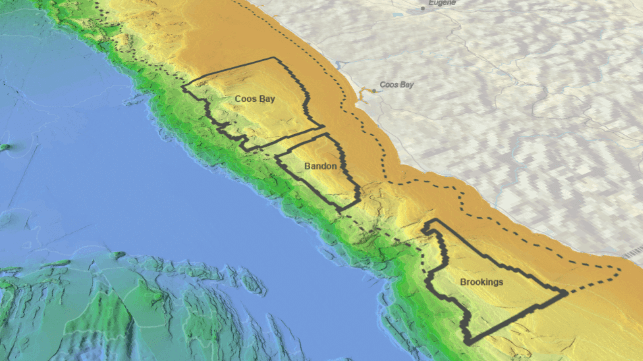BOEM Approves Environmental Analysis for Oregon Offshore Wind Leasing

The U.S. Bureau of Ocean Energy Management (BOEM) has finalized its environmental review process for the auction of wind lease areas off the coast of Southern Oregon, finding that the development activity will have no significant impact to people or to the environment.
"Working with Tribes, government partners, ocean users, and the public, we gathered a wealth of data, diverse perspectives, and valuable insights that shaped our environmental analysis," said BOEM director Elizabeth Klein. "We remain committed to continuing this close coordination to ensure potential offshore wind energy leasing and any future development in Oregon is done in a way that avoids, reduces, or mitigates potential impacts to ocean users and the marine environment."
Local tribes and fishermen oppose wind development off the Oregon coast, and BOEM's review process is locally controversial. This month, commissioners in both affected Oregon counties decided to put referenda on the November ballot to ask residents whether they should formally oppose offshore wind. While federal regulators will make the final decision on leasing and permitting, and the wind lease auctions will likely take place before the ballot, the referenda will provide a measurement of local sentiment.
"We had a town hall on this subject and it was it was attended by a broad base of people — both conservatives and liberals," Coos County commissioner Rod Taylor told local station KGW. "I don't recall hearing one person at that town hall who was in favor of this wind energy project."
BOEM's wind lease areas cover about 195,000 acres - about 11 percent smaller than originally proposed - and have about 2.4 GW of generation potential. The areas were selected with local fishing interests in mind, but trawl and longline fishermen are concerned that the long mooring chains of floating offshore wind farms would effectively close off large sections of ocean to fishing activity.
"We’re moving to a place now where we are considering coming out and just saying no to offshore wind rather than being willing to work through a process, because that process is stalled," said Heather Mann, executive director of the Midwater Trawlers Cooperative, speaking to Jefferson Public Radio. "BOEM is moving forward regardless."
The environmental analysis that BOEM approved Tuesday is a preliminary review. The full environmental impact assessment for a U.S. offshore wind development comes during the project permitting phase, after the developer has invested in a lease area and formulated a construction and operations plan. Any specific project off the West Coast would still have to undergo further environmental review before construction; to date, BOEM has approved a final environmental impact statement for nine projects and rejected none.
BOEM's regulatory decisions may not necessarily be the controlling factor for the timing of commercial development. The U.S. East Coast offshore wind industry has encountered setbacks due to high interest rates and supply chain delays, which have raised costs. Development on the U.S. West Coast will be even more costly, because the region's deep water will require more expensive floating offshore wind platforms and moorings.
